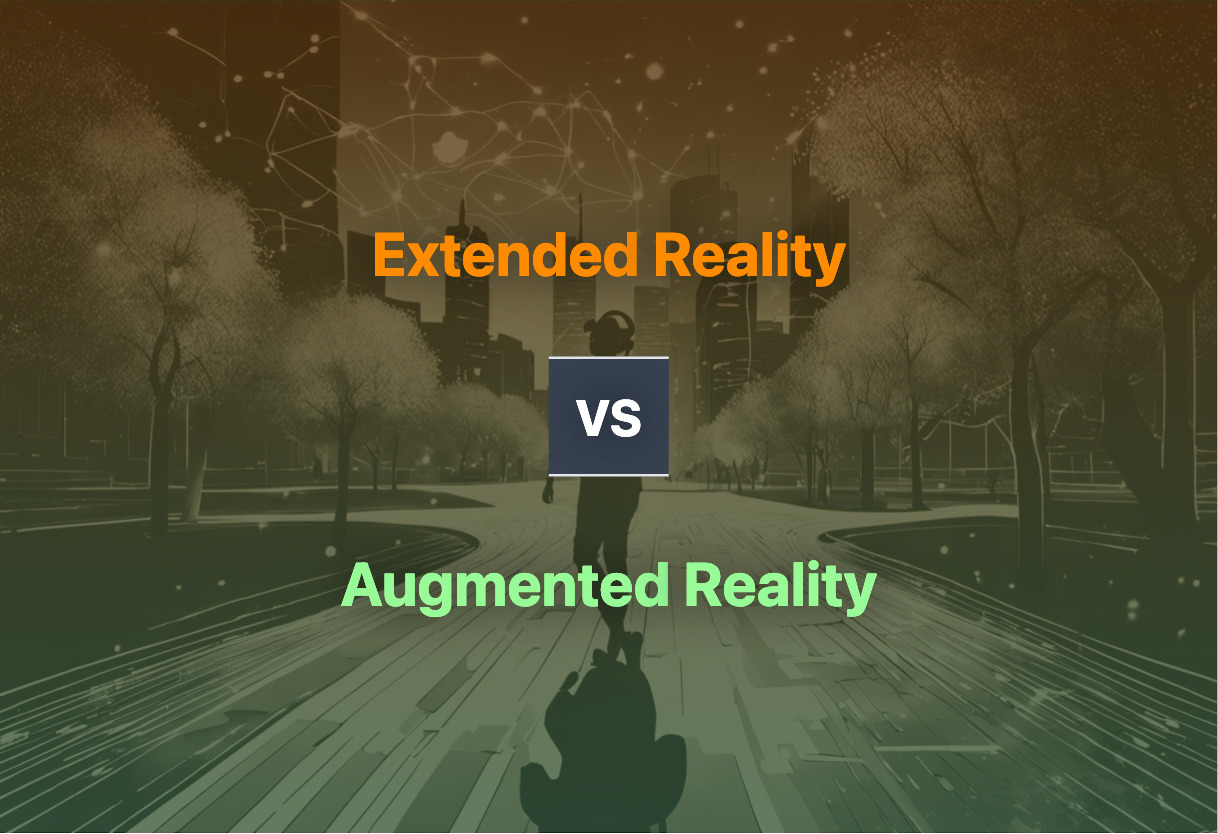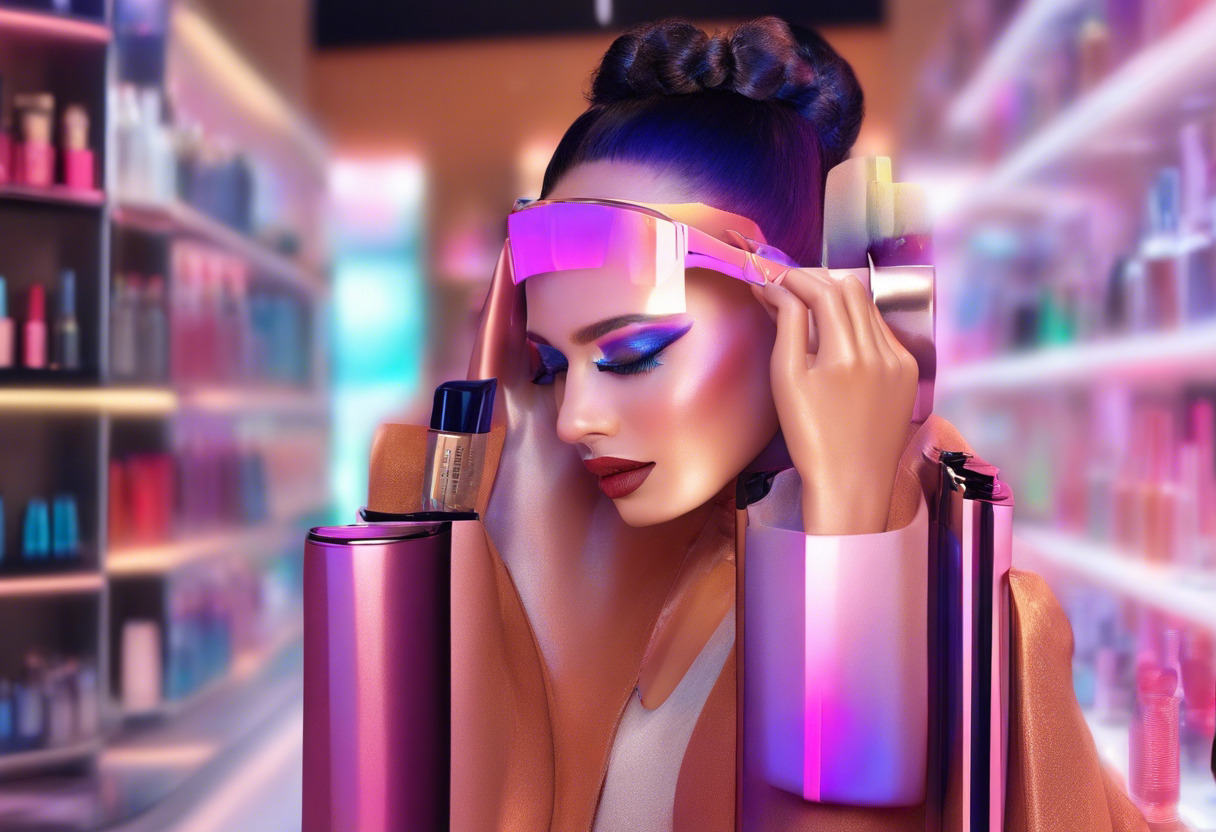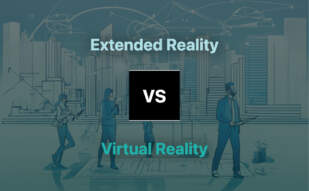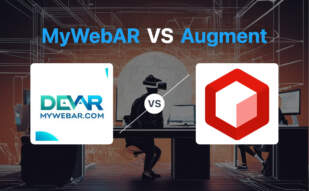If you’re aiming for diverse applications, ranging from gaming to healthcare, opt for Extended Reality (XR). XR encompasses AR, VR, and MR, promising widespread utility and traction in the creative economy. However, for enhancing existing real-world premises without full substitution, Augmented Reality (AR) offers unique values, robust AI support, and an increasing presence in industries including retail and entertainment.

Key Differences Between Extended Reality and Augmented Reality
- Application Spectrum: XR offers broader use-cases encompassing VR, AR, and MR, while AR is predominantly used to enhance real-world scenarios.
- Commercial Use: AR is rapidly gaining ground in industries like retail and tourism, whereas XR is finding its footing in areas like education and healthcare.
- Technology: XR incorporates complex technologies for entirely immersive experiences. AR primarily operates on AI, AR software, processing, lenses, and sensors for enhancing real-world interaction.
- Scope and Potential: XR is speculated to play a significant part in metaverse development, while AR has promising potential in fields like remote work and robust collaboration.
| Comparison | Extended Reality (XR) | Augmented Reality (AR) |
|---|---|---|
| Origin | Concept dates back to 1800s | Initial technology developed in 1968 |
| Growth Drivers | Presence in sectors such as military, healthcare, education | Increasing popularity of AR games and apps, expanded 5G network |
| Commercial Application | Spending on XR products and services predicted to hit $18.8 billion in 2020 | AR apps increasingly used in marketing, fashion, tourism, retail industries |
| Usage | VR, MR, and AR applications across industries | AR primarily used for enhancing real-world reality |
| Technological Requirements | Requires devices like VR headsets | Requires AI, AR software, processing, lenses, sensors |
| Potential | Expected to impact traditional workplaces by facilitating increased collaboration and inclusive decision-making | Shows potential within remote work and enhanced collaboration |
| Challenges | Faces issues with high costs, user comfort, content development, interoperability and privacy | Successful implementation depends on meaningful content and realistic interaction between virtual and physical world |
What Is Extended Reality (XR) and Who’s It For?
Extended Reality (XR) is a blend of Virtual Reality (VR), Augmented Reality (AR), and Mixed Reality (MR) technologies. Originated in the 1800s with the concept of “stereopsis” or “binocular vision”, today’s applications of XR span across various industries including gaming, education, and healthcare. At its core, XR offers immersive digital experiences, allowing users to step beyond the boundaries of the physical world.
XR devices and software are for consumers who seek immersive digital experiences and for industries striving for efficient simulations and real-time interactive responses. From entertainment enthusiasts to professionals in the creative economy, military, healthcare, and education sectors — all find benefits in XR.

Pros of Extended Reality (XR)
- Seamlessly combines real and virtual worlds
- Promotes collaboration and decision-making.
- Impacts multiple sectors, aiding optimization and simplification of complex processes.
Cons of Extended Reality (XR)
- Involves high costs for effective implementation.
- Presents user comfort challenges.
- Sensitive to issues of ethical considerations and data privacy.
What Is Augmented Reality (AR) and Who’s It For?
Augmented Reality (AR) is a digitally transformative technology that extends the real world with additional layers of data and imagery. Devised initially in 1968, AR has evolved to provide realistic interactions between the physical and digital spheres. Powerful mobile devices render software support, making AR more accessible and versatile than ever before.
This technology is for those interested in enhancing their real-world experiences, such as marketing professionals looking to engage customers uniquely or cultural institutions exploring new interactive methods. AR also holds promise for remote working environments by providing collaborative opportunities.

Pros of Augmented Reality (AR)
- Enhances real-world interaction with insightful digital overlays.
- Promotes immersive experiences in entertainment, education, and retail.
- Supports remote work and collaboration opportunities.
Cons of Augmented Reality (AR)
- Dependent on sophisticated tech such as AI, AR software, and various sensors.
- Presents challenges in creating meaningful content that surpasses other technologies.
- Implementation may require substantial resources for operation and maintenance.
XR or AR: An Informed Choice
Engulfed in the wave of digital transformation, the ultimate verdict on XR or AR radically depends on your specific usage context.
Creative Industries
In the arena of gaming, film, and design, XR reigns supreme. Leveraging its spectrum – VR, AR, and MR – XR creates unparalleled immersion, interaction, and innovation.
- XR fuels creative imagination, transcending reality constraints.
- It optimizes production, perfecting efficiency.
Consider Apple’s Vision Pro – a leap into XR’s future.
Consumer-Centric Businesses
Entities aiming for closer customer engagement, AR is your ally.
- AR’s real-time augmentation provides measurable value.
- From virtual makeup ‘try-ons’ to AR games, this technology is rewriting customer experiences.

Knowledge-Based Sectors
Educational and cultural institutions can exploit both XR and AR to enrich learning and exploration.
- XR enables interactive simulations, enhancing understanding.
Meanwhile, AR brings cultural, historical, or geographical facts to life at one’s fingertips.
In a nutshell, although XR boasts broader application potential, AR’s real-world integrative capacity makes it equally compelling; a choice between them hinges on distinctive end-use scenarios. Still, be wary of having to navigate challenges in either technology, such as high infrastructure cost and privacy concerns.
Patrick Daugherty
Content writer @ Aircada. Merging AR expertise with a love for late-night gaming sessions.





